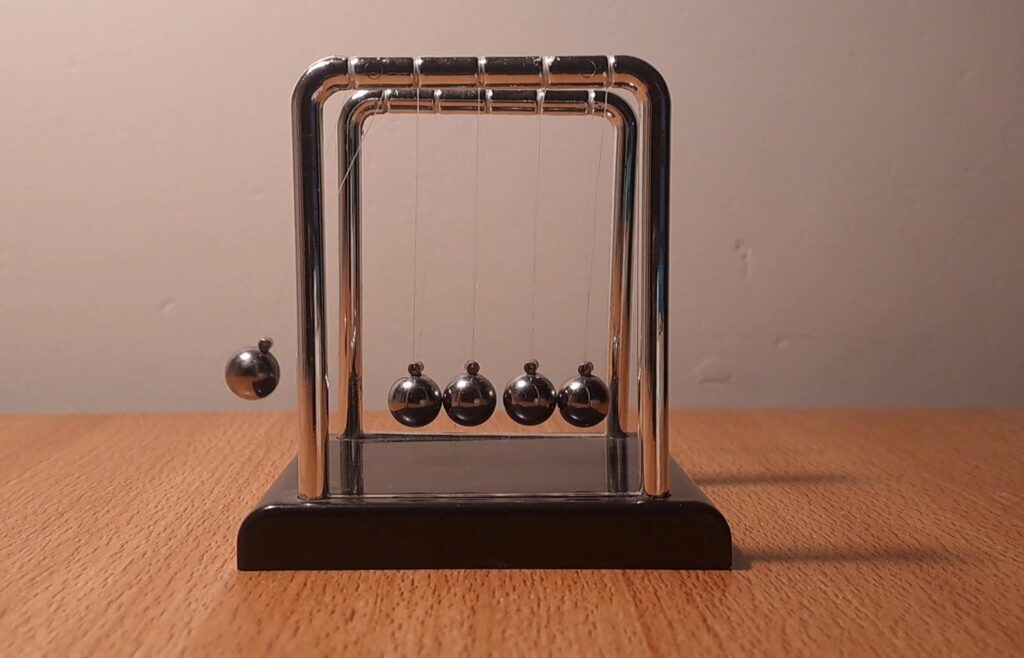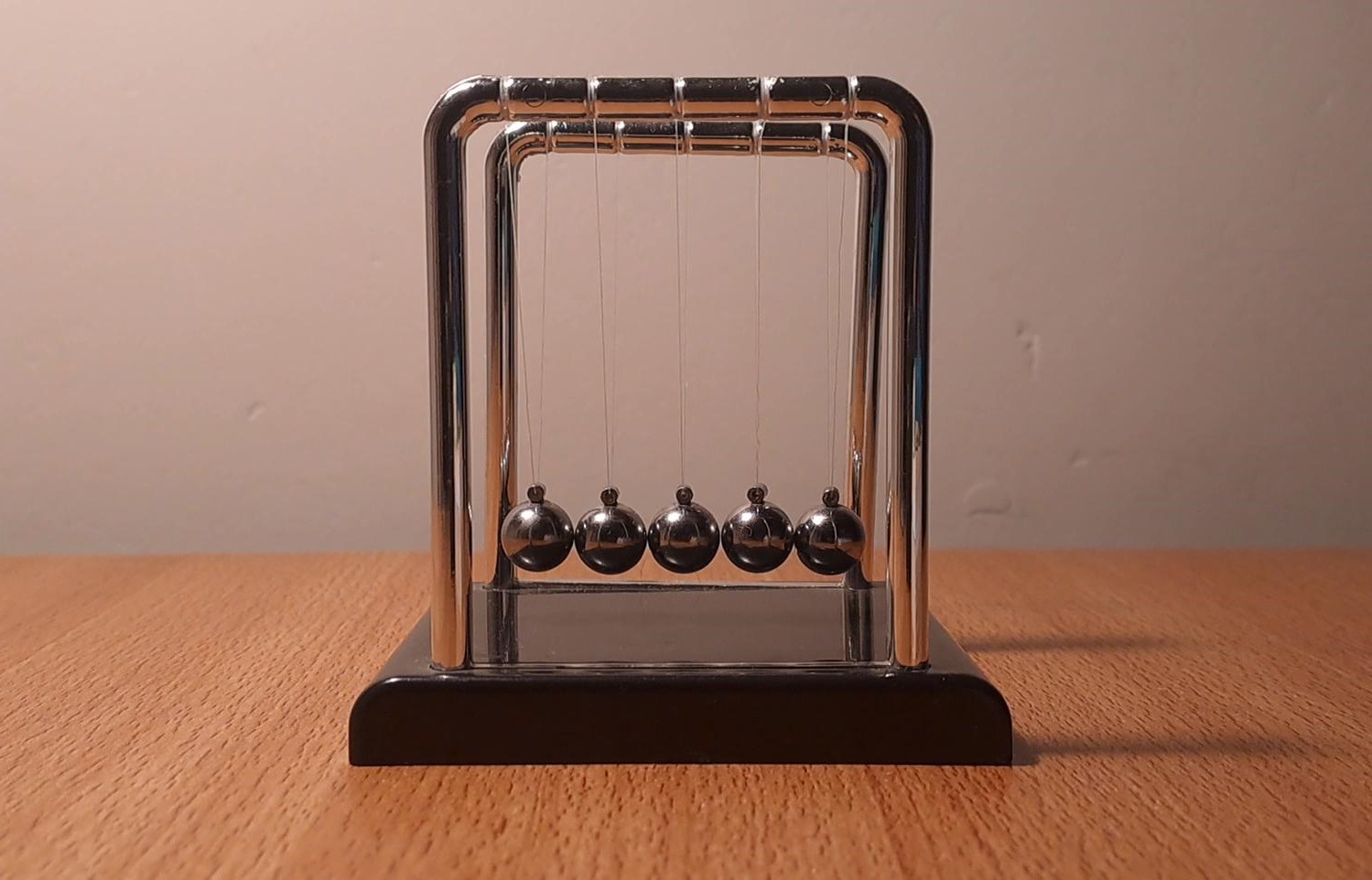The Newton’s Cradle is a device that beautifully showcases the conservation of momentum. Before explaining how Newton’s Cradle work, let’s first understand the concept of momentum.
What is momentum?
Momentum is a characteristic of moving objects that describes how much “oomph” they have when they’re in motion. It’s like how a heavy truck is harder to stop than a bicycle because it has more momentum.
Hence momentum the product of Mass and Velocity.
Momentum = Mass x Velocity
One of the fundamental laws of physics is that momentum of a system will remain conserved. It means that it simply cannot be disappeared. When two things collide or interact, their total momentum before the interaction is the same as their total momentum after. It’s like a game of pool: when one ball hits another, they transfer momentum, but the total momentum of all the balls stays the same.
How Newton’s Cradle explains Momentum Conservation?
Now understanding how Newton’s Cradle work will help you understand the Conservation of Momentum. Newton’s Cradle consists of metal balls hanging from strings.
When you lift one ball and let it go, it swings down and collides with the stationary balls. The ball transfers its momentum to all the stationary balls and as a result, the last ball on the other end starts moving and the first ball becomes stationary. Similarly, the last ball upon reaching at maximum point starts to swing back towards the stationary balls. Upon colliding with stationary balls, most of momentum of this last ball gets to the first ball at the other end. Consequently, the first ball starts is motion again.
Similarly, the above experiment can be repeated with two, three or four balls. If, for example, three balls are pulled back and released, then upon hitting with stationary balls, exactly three ball will start moving toward other end.


Inelastic Collisions
Please note when the first ball will collide the stationary balls, some of the kinetic energy of the first ball will be lost in the form of heat and sound. Consequently, less kinetic energy will be transferred to the stationary balls and the last ball will not reach to the same point as that of the first ball. The collision of this kind in which kinetic energy is not conserved is known as inelastic collision.
Since in each collision, the whole system will continue to loss kinetic energy, so after sometime, all the balls will become stationary.
Hence Newton cradle is interesting device to understand collision and how momentum remains conserved during the collision.
If you are interested to buy your own Newton Cradle, click here:
https://s.click.aliexpress.com/e/_opvBKn1
You can watch the video here relating to Newton Cradle.

